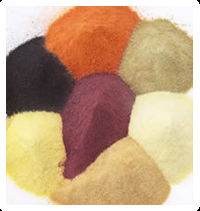Tamarind Purchase & Information

Alternative Names
Imlee, Imli, Tamarin, Tamarindo, Tamarinier, Tamarinier d'Inde, Tintiri CAUTION: Please refer to separate listing for Garcinia
Scientific Name
Tamarindus indica
Why Do People Use Tamarind?
Oral preparation of Tamarindus indica (Tamarind), like tamarind powder, are used for acute and chronic constipation, to decrease fever, gallbladder and liver dysfunctions, to treat pregnancy-related nausea, for stomach disorders, as an anthelmintic for children and to treat colds.
Topically - A paste made of tamarind seeds can be applied to the skin as a cast for broken bones. Tamarind seeds extract is also used in eye drops for dry eye syndromes
In Foods and Beverages - Tamarind is used as a flavoring agent in various beverages and food items. It is also widely consumed in the Asian cuisine for curries and chutneys.
Is It Safe To Use?
Likely Safe - Oral consumption of tamarind powder is thought to be safe, when used in amounts commonly found in food items. Tamarind has attained Generally Recognized as Safe (GRAS) status in the United States.
However, there is limited and unreliable information available to rate the safety of tamarind when used in amount generally found in food items.
Avoid in Pregnancy and Breastfeeding - Pregnant and breastfeeding mothers should avoid oral or topical use of tamarind, particularly amounts greater than those found in food items.
How Effective Is Tamarind?
There is limited and unreliable information available to rate the effectiveness of tamarind powder in following condition:
Dry Eyes - Initial clinical reports propose that a tamarind seed polysaccharide extract may improve the symptoms of dry eye syndrome. However, more confirmations are required to know the effectiveness of tamarind for this specific purpose.
How Tamarind Works?
The fruit/pod and dried tamarind powder are typically used for medicinal purpose. It further consists of d-tartaric acid, plant acids, pectin, sugars, vitamins, protein and minerals. The volatile oil consist of more than 60 compounds such as methyl safrole and salicylate. Fruit pulp has mild laxative effects, but heating results in loss of this effect. There are some clinical researches that recommend that liquid extract is highly lethal to the parasite-carrying snail Bulinus trucatus and trematode Schistosoma mansoni. However, some other experiments suggest that tamarind constituent tamarindienal may have antibacterial activity against Staphylococcus aureus, Bacillus subtilis, Pseudomonas aeruginosa and Escherichia coli and antifungal activity against Candida albicans, Aspergillus niger.
Seeds part of tamarind consist of a polysaccharide with a branched chain arrangement identical to the mucin found in the eye, which assist to wet and protect the corneal surface. Eye drops containing this polysaccharide are being reported in dry eye syndromes.
What Are The Side Effects /Adverse Reactions of Tamarind?
No known side effects.
How Tamarind Interacts With Other Herbs and Supplements?
Not known.
How Tamarind Interacts With Drugs?
Aspirin - Interaction rating between tamarind powder and aspirin is moderate, so be careful about this mixture. Daily consumption of tamarind fruit extract as a component of the food millet porridge concurrently with aspirin appears to enhance the absorption of aspirin and its blood level as well. This could enhance the potential risk of aspirin side effects.
Ibuprofen - Interaction rating between Tamarindus indica and ibuprofen is moderate, so be careful about this mixture. Oral consumption of tamarind fruit extract as a content of the food millet porridge concurrently with ibuprofen appears to enhance the blood levels and ibuprofen absorption. This could enhance the risk associated with ibuprofen side effects.
How Tamarind Interacts With Foods?
Not known.
How Tamarind Interacts With Lab Tests?
Not known.
How Tamarind Interacts With Diseases and Conditions?
Not known.
What Should Be the Dose/Administration of Tamarind?
ORAL As a laxative, tamarind paste is used in the range of 10 to 50 grams as fruit cubes. Such paste is made from the fermented fruit of Tamarindus indica.
TOPICAL There is no specific topical dosage for tamarind.
Comments
None.
General Certificate of Analysis (COA)
Specification sheet links below are a standard copy of the COA less the batch or lot number and manufactures dates. Specification sheet can be dated and should only be considered as a general information. Please contact and request an up to date COA if needed for specific updated information before placing order by filling out the contact form with product name and SKU number. If ordering quantities of twenty five kilos or more contact for availability.
